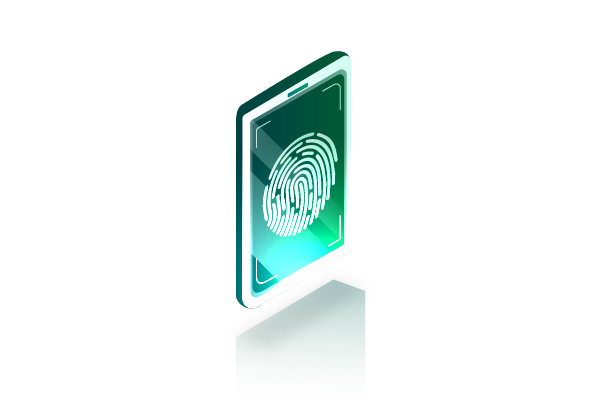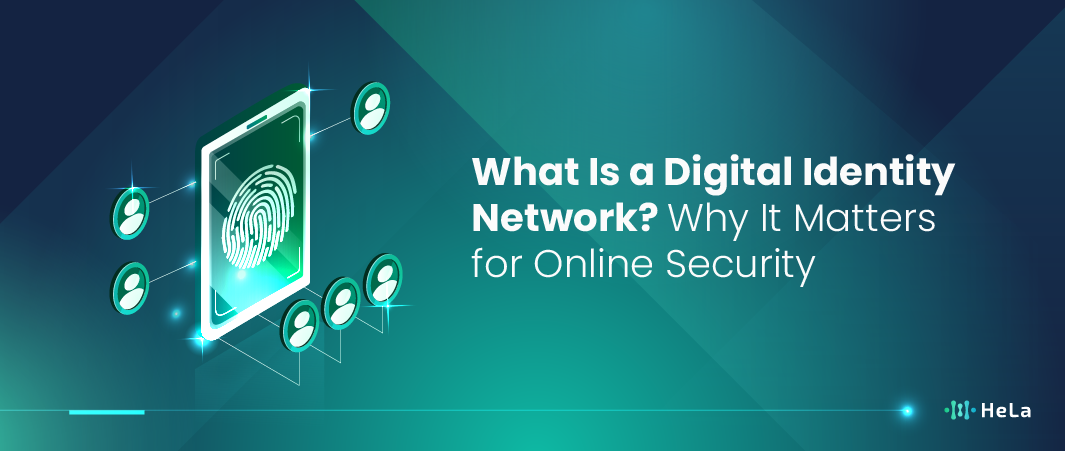Every time you log in to a website, make a payment online, or sign up for a new service, you leave a digital footprint. These actions say a lot about you—your name, your location, the device you use, and even how fast you type. This is part of your digital identity.
As cybercrime grows, it becomes more important to protect your online identity. Traditional methods like passwords and simple authentication are not enough. Cybercriminals are smart. They use stolen data and fake accounts to trick systems and steal from people and businesses.
This is where a digital identity network comes in. It helps make the internet safer by using data from many sources to check if someone is really who they say they are. In this article, we’ll explain what a digital identity network is, how it works, and why it matters for your safety online.
What Is a Digital Identity Network?

A digital identity network is a shared system that gathers and analyzes identity data across many websites, devices, and users. It connects millions or even billions of digital interactions to spot patterns. These patterns help decide if a user is real or fake.
For example, let’s say someone is trying to log in to a bank account from a device in a country the real user has never visited. The digital identity network may flag this as risky. It compares that behavior with data from other users and similar logins. If it sees a mismatch, it can block the login or ask for extra proof.
Unlike single-site systems, a digital identity network works across multiple platforms. It does not only look at one person’s data. It compares identity signals from many companies and industries. This shared knowledge gives it a much better view of what’s normal and what’s not.
How a Digital Identity Network Works
Digital identity networks use a mix of data points to create identity profiles. These profiles are used to spot trusted users and flag threats. The system does not use just one factor. It combines many to get a full picture.
Here are some of the data points a digital identity network may track:
| Data Type | What It Tracks |
| Device Information | Device type, model, OS, browser |
| Location Data | IP address, GPS, country, city |
| Behavioral Signals | Typing speed, mouse movements, time of use |
| Account History | Login times, transaction patterns |
| Network Connections | Wi-Fi, VPN, proxy use |
| Shared Reputation Data | Risk signals from other platforms |
This data is collected in real-time. It is then compared to a massive database of other interactions. Machine learning models and AI analyze the data to make a decision. The more data the network has, the better it gets at spotting fraud.
Because this process happens in seconds, it doesn’t slow down users. A good digital identity network works quietly in the background. Most people don’t even notice it.
Also Read: Top 10 Tokenization Crypto Projects Leading the Digital Asset Revolution in 2025
Why a Digital Identity Network Improves Security

Online fraud is a serious and growing problem. In 2024 alone, global losses from cybercrime were expected to surpass $10 trillion. Businesses face large financial risks, brand damage, and legal issues. But individuals also pay the price. Their private data is stolen, their accounts are taken over, and in many cases, their money is gone before they even know it.
Traditional security systems struggle to keep up. Passwords, two-factor authentication, and IP checks are often not enough. Attackers now use advanced tools like bots, social engineering, and AI to get around basic protections.
A digital identity network helps reduce these risks by giving platforms a smarter, wider view of user behavior. Instead of checking only one action or one user, it sees millions at once and looks for unusual patterns.
Here’s how it improves online security:
- Spot Fake Accounts – If someone tries to open many fake accounts from the same device, network, or using similar behaviors, the system can detect and stop them.
- Stop Account Takeovers – If login habits suddenly change (like logging in from a new device in another country), the network can block access or request extra proof before allowing entry.
- Catch Fraud Early – Digital identity networks detect early signs of fraud by analyzing global trends and shared threats. This helps catch attacks before real harm is done.
- Reduce False Alarms – Many systems wrongly block real users due to limited data. A digital identity network uses broader insights to reduce these false positives and create a smoother user experience.
Below is a table that compares traditional fraud detection systems with digital identity networks:
| Feature | Traditional System | Digital Identity Network |
| Scope | One website | Many websites and platforms |
| Speed | Slower, rule-based | Real-time, AI-powered |
| Accuracy | Medium | High |
| Fraud Detection | Basic patterns | Advanced behavior analysis |
| Privacy | Often isolated | Shared but anonymized |
The wider view and smarter detection tools of a digital identity network give businesses a stronger defense without hurting user experience. It allows them to act fast, trust real users more easily, and keep out attackers before they do harm.
In today’s connected world, where threats cross borders and systems in seconds, digital identity networks offer a better path forward. They don’t just patch the cracks — they help rebuild trust in the foundation of digital life.
Digital Identity Networks and User Privacy
Some people worry that systems tracking user data may harm their privacy. This concern is valid. In recent years, there have been many cases of data misuse and leaks. People are more aware of how their information is collected and used online. As a result, privacy is now a key issue for any digital system — including digital identity networks.
However, most well-designed digital identity networks are built with privacy at their core. Their purpose is not to gather personal details, but to understand patterns of behavior that may signal fraud or risk. The focus is on keeping people safe, not watching their every move.
Here are several ways these networks protect user privacy:
- Anonymized Data – Information is stripped of personal identifiers like names, emails, or account numbers. The system uses anonymous signals instead, such as device types, login times, or network speed.
- Encryption – All collected data is encrypted during transfer and storage. Even if someone tries to intercept it, they won’t be able to read or use the information.
- No Central Storage of Identity – Digital identity networks do not create or store full user profiles. Instead, they analyze small data points that describe behavior, not identity.
- Consent and Transparency – Many digital services ask for permission before collecting identity-related signals. Good platforms also explain what is collected and why.
Importantly, these networks are not built to track people for ads or commercial targeting. They do not follow users across the internet to build marketing profiles. Instead, they are trained to look for fraud patterns — like login attempts from multiple countries in a short time, or repeated failed logins across different websites.
Privacy laws also play a big role. Regulations like the General Data Protection Regulation (GDPR) in Europe and the California Consumer Privacy Act (CCPA) in the U.S. set clear rules for data collection, usage, and storage. These laws give users the right to know what data is collected about them, and in some cases, the right to delete it. Leading digital identity networks follow these laws strictly, often going beyond minimum requirements.
As privacy tools and laws continue to evolve, digital identity networks must adapt. The goal is to maintain high levels of protection without crossing the line into surveillance. The best networks strike a balance — they protect against digital threats while respecting personal rights.
Real-World Use Cases

Digital identity networks are not just a concept — they are already working behind the scenes in many industries. From banking to retail to social platforms, these networks are helping companies reduce fraud, protect users, and create safer digital spaces. Below are some key examples of how they are used in real life.
1. Banking and Finance
Banks are top targets for cybercriminals. They face daily threats like account takeovers, loan fraud, and payment scams. A digital identity network helps them:
- Detect when a stolen credit card is used across multiple locations or websites.
- Block fake applications for loans or new credit accounts.
- Identify risky transactions before they are approved or processed.
By using global data and behavioral signals, banks can quickly recognize fraud attempts — even if the fraudster has never attacked that specific bank before.
2. E-Commerce and Retail
Online stores lose billions of dollars each year due to fraud. Digital identity networks help retailers:
- Stop bots from hoarding limited products, like event tickets or high-demand items.
- Catch fake buyers who use stolen payment information to make purchases.
- Prevent repeat abusers from making false return or refund claims.
Because the network connects activity across different platforms, it can track suspicious behavior even when the fraudster switches websites or user accounts.
3. Social Media and Communication Apps
Fake accounts are a major problem on social networks. They are used to spread scams, spam, misinformation, and even hate speech. Identity networks can:
- Detect when one person is creating many fake accounts using similar devices or behavior.
- Block bots that send mass messages or fake friend requests.
- Catch users who frequently change names, photos, or IP addresses to avoid bans.
These protections help platforms stay clean and trustworthy — especially as more people rely on social media for news, work, and personal communication.
Together, these examples show that digital identity networks are powerful tools that help businesses stay a step ahead of cyber threats. They offer smarter, faster ways to protect users and reduce fraud, all while running quietly in the background.
Also Read: The Rise of Digital Collectibles: Exploring Ownership in the Virtual World
Challenges and Future of Digital Identity Networks
While digital identity networks offer many benefits, they are not perfect. Like any technology, they come with trade-offs and risks. Understanding these challenges is important for building better systems and making sure they remain fair, secure, and trustworthy.
Here are some of the main issues these networks face:
- Data Gaps – Some users block tracking tools or use privacy-focused browsers and VPNs. This can make it harder for the network to collect enough signals to make accurate decisions.
- False Positives – Even with smart algorithms, there’s always a risk that legitimate users get flagged as suspicious. This can lead to blocked accounts or denied access, creating frustration and lost trust.
- Privacy Pushback – Users and lawmakers are calling for greater transparency and control over personal data. Digital identity networks must keep evolving to meet these growing expectations.
- System Abuse – If misused, identity networks could be turned into tools for mass surveillance or profiling. Strong rules and ethical standards are needed to prevent this.
Despite these challenges, the future of digital identity networks looks promising. Artificial intelligence continues to improve, making detection more accurate and adaptable. New privacy technologies — like differential privacy, which adds “noise” to data to protect individuals, and zero-knowledge proofs, which verify facts without exposing data — offer better ways to balance safety with privacy.
If done right, the next generation of digital identity networks will be smarter, more transparent, and more secure — helping everyone stay safe online while respecting personal rights and freedoms.
Conclusion
Online safety is no longer just about passwords. Identity is more complex than a login name and code. Criminals use stolen data, bots, and smart tools to attack systems. A digital identity network gives us a better way to stop them.
By collecting and analyzing data from many sources, these networks can tell what’s normal and what’s not. They help stop fraud, block fake accounts, and protect people without slowing them down. And they can do it without needing to store private user data.
As more services go digital, the role of identity networks will grow. They offer a safer, smarter way to keep people and businesses secure. And if used right, they can also respect privacy and build trust.
In short, a digital identity network is not just a tech tool. It’s a shared system to make the internet better — for everyone.
Disclaimer: The information provided by HeLa Labs in this article is intended for general informational purposes and does not reflect the company’s opinion. It is not intended as investment advice or recommendations. Readers are strongly advised to conduct their own thorough research and consult with a qualified financial advisor before making any financial decisions.

Joshua Soriano
I am a writer specializing in decentralized systems, digital assets, and Web3 innovation. I develop research-driven explainers, case studies, and thought leadership that connect blockchain infrastructure, smart contract design, and tokenization models to real-world outcomes.
My work focuses on translating complex technical concepts into clear, actionable narratives for builders, businesses, and investors, highlighting transparency, security, and operational efficiency. Each piece blends primary-source research, protocol documentation, and practitioner insights to surface what matters for adoption and risk reduction, helping teams make informed decisions with precise, accessible content.
- Joshua Soriano#molongui-disabled-link
- Joshua Soriano#molongui-disabled-link
- Joshua Soriano#molongui-disabled-link
- Joshua Soriano#molongui-disabled-link

